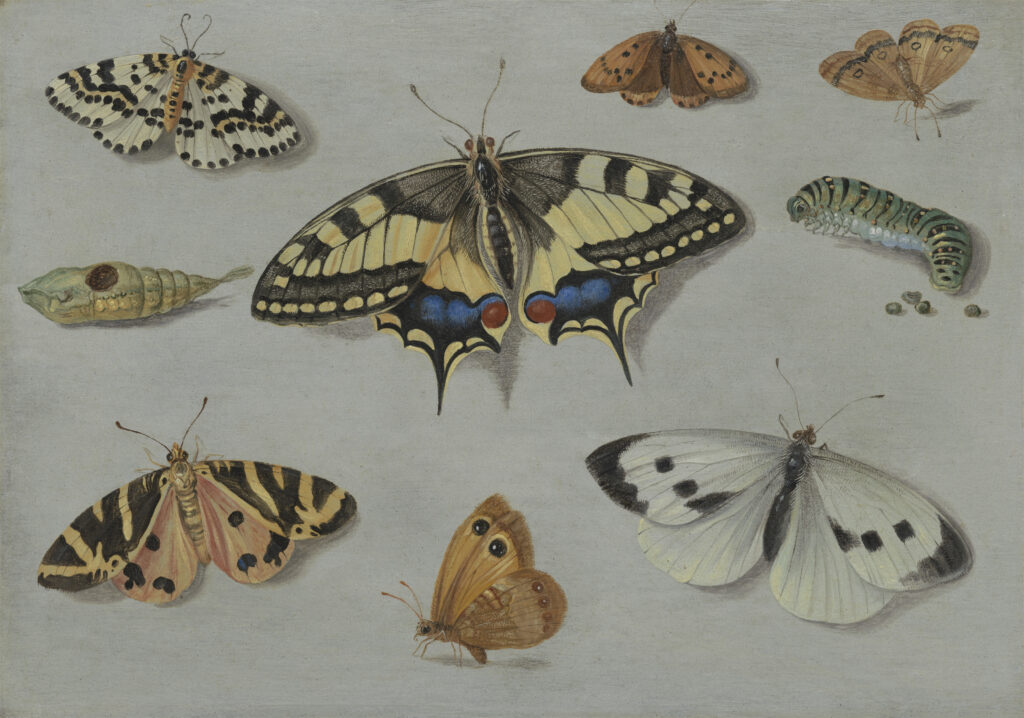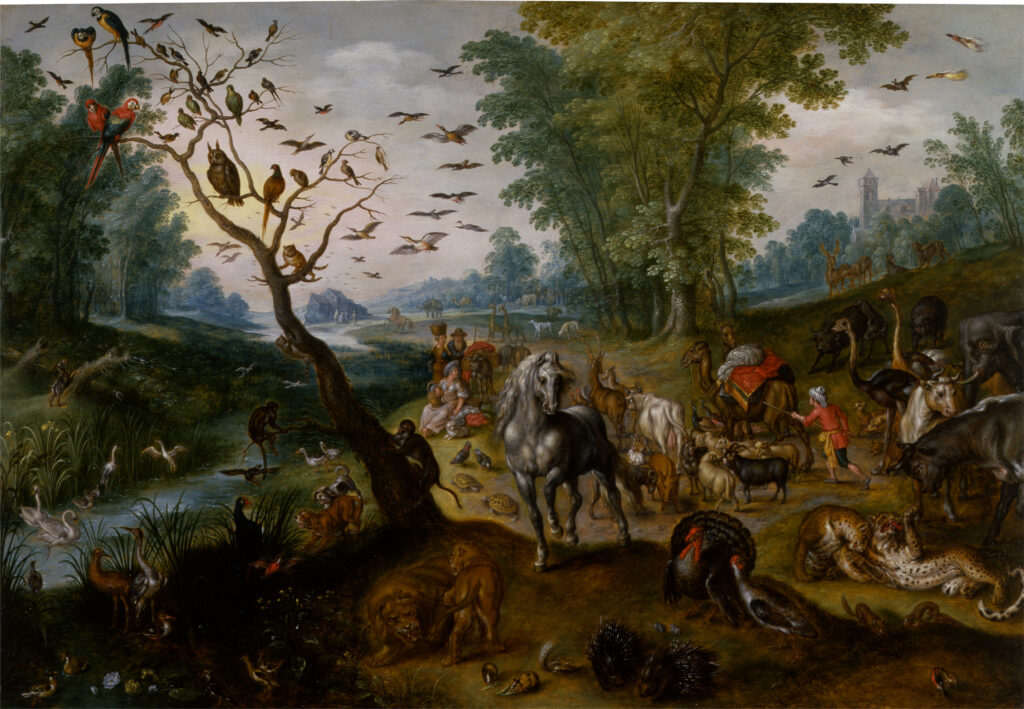‘Little Beasts: Art, Wonder, and the Natural World’
National Gallery, Washington, D.C.
Through November 2
For “Little Beasts: Art, Wonder, and the Natural World,” the curators at the National Gallery of Art team up with the Smithsonian’s National Museum of Natural History to create a dazzling exhibition of 16th and 17th century prints, drawings, and paintings of plants and animals, with a particular focus on insects and other beestjes (“little beasts” in Dutch), mostly drawn from the NGA’s collection of European art.
These works of art would have been enough for a rewarding standalone show, but the team at the Natural History Museum has actually identified the specific beestjes depicted and provided specimens of many of them to accompany their artistic renderings.
This is the first collaboration between the National Gallery and the Natural History Museum, and the curatorial chemistry is phenomenal. “Little Beasts” brings to light the integral relationship between art and the blossoming study of natural science between roughly 1500 and 1700. Artistic representations of the natural world encouraged and enabled scientific inquiry.
Artists in turn were informed by recent scientific progress and empowered by new technologies to depict their subjects with greater accuracy and beauty. This same spirit of give-and-take is at work in this innovative, playfully collaborative show. In one delightful juxtaposition, real insects and a sprig of rosemary are arranged with pins onto a linen surface, perfectly replicating the arrangement in Jan van Kessel’s delicate oil study “Insects and a Sprig of Rosemary,” hanging next-door.

Another display demonstrates the niche practice of lepidochromy, a method of printmaking that transfers the scales from a real butterfly wing to paper, capturing its pattern and hues. If the show’s underlying thesis is that art and science are symbiotic, this exhibition itself is a case in point.
The first work of art you encounter upon entering “Little Beasts” is Albrecht Dürer’s small gouache study, “Tuft of Cowslips” (1526). The painting is scrupulously precise, and Dürer’s gossamer-fine touch gives the plant both a sense of lightness and leafy substantiality. A little further on is a work by Hans Hoffmann, one of Dürer’s most dedicated acolytes, whose “Red Squirrel” (1578) is rendered with such sumptuous, silky detail as to give the humble creature an almost regal character.
These two works set an appropriate tone for the show: Dürer’s studies of plants and animals heralded a blossoming artistic interest in the natural world, while Hoffmann’s luxurious little beast hints at an increasingly covetous approach to nature accompanying the exploration, trade, and colonial expansion that defined the period. Throughout the show there is a push-pull between reverence for the natural world and a desire to possess it.
At the heart of the exhibition is Joris Hoefnagel’s “The Four Elements,” a series of 270 watercolor miniatures of animals categorized by each element and bound into four volumes: “Aeir (air),” “Acqua (water),” “Terra (earth),” and “Ignis (fire).” The paintings contained in these volumes are extraordinary in their beauty and technical mastery.
Picking up where Dürer left off (indeed, Hoefnagel’s “Stag Beetle” reproduces Dürer’s famous predecessor almost pincer-for-pincer) Hoefnagel created his own encyclopedia of the animal kingdom, which was eventually purchased by Hoefnagel’s patron, a Holy Roman emperor, Rudolf II. In several of the miniatures contained in “Ignis,” Hoefnagel affixed real dragonfly wings to the painting in a perfectly executed fusion of nature and art.

“Little Beasts” offers a rare opportunity to see these one-of-a-kind watercolor jewels, as the works are extremely delicate and sensitive to light. To make the most of the time “The Four Elements” is on view, the curators will be turning the pages of its delicate volumes on June 30, August 11, and September 22.
“Little Beasts,” for all its sense of whimsy, is a historically and scientifically dense show. Interactive digital displays are available to help visitors break down — dissect, if you will — the techniques, art-historical references, and other surprising significances contained within many of the works.
This exhibition’s approach to these artworks is refreshingly empirical. The artworks derive their potency from technical mastery and a palpable sense of scientific curiosity, not from any arcane symbolism or moral posturing. Biblical references and inscriptions in the artworks are common, but, as the show’s title suggests, they mostly express a sense of wonder at God’s marvelous powers of creation.



